Age achaques
2005/03/01 Kortabarria Olabarria, Beñardo - Elhuyar Zientzia Iturria: Elhuyar aldizkaria
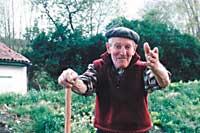
In the chassis, on the face and on the skin, the achaques of age are mainly noticed. In fact, the skin in old age has neither shine nor vitality since its birth, appears full of wrinkles, without tension. However, age, beyond the apparent, does not pose special problems in the chassis.
Fear of the body, yes, can be a sign of old age. Seeing elderly people who cannot control panic is no wonder, especially when they try to move around to do something. It is usually a family illness. In the head, in the hands and arms, in the eyelids and in the voice panic appears and feels evident, while the legs are not affected. In addition, with sleep they disappear to reappear when rising. Sedatives and anticonvulsants are used in treatments, avoiding stimulants. In this way the effect of the Ika can be mitigated, but they do not heal.
Those hard bones
The same is not as evident as the tremor, but the age in the body structure, in the skeleton, gives the real wood. Those who have no disease also perceive the passage of time. The joints harden and the body loses elasticity at the cost of taking curves. Diseases appear in coast interval at impossibility. Osteoarthritis is one of the most widespread. It is a degenerative disease that affects the joints of the spine, knee, hands, hip, etc. Osteoarthritis is painful and makes mobility difficult.
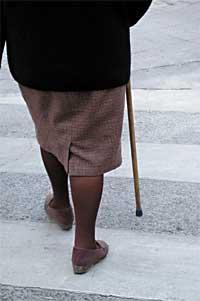
Arthrosis is also called reminiscence in Basque and among friends. Most people over age 70 have any symptoms of osteoarthritis in a body joint. Age is therefore the cause of osteoarthritis. But not always. Alterations of certain hereditary proteins are able to produce early cartilage degeneration. Apart from these special factors, obesity and lack of physical exercise are considered factors that determine the appearance of osteoarthritis in early ages. Pain and lack of mobility are the clearest signs of osteoarthritis.
Like old age itself, osteoarthritis has no remedy, it cannot be cured, but it can be alleviated. Improve joint mobility and reduce pain. Anti-inflammatory drugs and steroid injections are used in the joints. To increase their influence, specific physical exercises are also required to work the joints. Surgery is also used in more severe cases of osteoarthritis, joints are removed and prostheses are applied. In some border cases, instead of placing prostheses, osteoarthritis is performed, that is, the joint is left without function. When prostheses do not work they do so to eliminate joint pain.
Other bone diseases, common in old age, are the loss of bone mass, and one of the most serious is spondyloarthritis or osteochondritis. It is a very painful spinal disease. Pain usually occurs at rest intervals and often reaches the neck and shoulder. There may be long periods without pain and sometimes the disease seems to have disappeared. I think it cannot be cured.
Blood Running
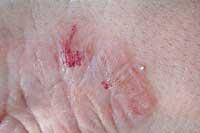
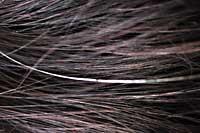
They have nothing to do with the flexibility of the bones, but the list of diseases of the elderly that hinder the movement of the body is long. All have the same basis: poor blood circulation. Because of the thickening of the blood itself, the narrowness of the blood steps, its softening, etc., blood flow is usually not adequate and many problems occur.
Arteriosclerosis of the extremities is one of the most common. Arteriosclerosis is reported for the discomfort that occur in the ditches and feet during movement, while at rest the pain disappears. Tingling and foot ulcers are also not rare.
Arteriosclerosis is a problem of blood flow that stops. As if there was something that prevents the passage of fuel. This is called occlusion. When this happens, the foot bleaches and cools, feeling pain. Although there is often a blow, occlusion can occur slowly. When it happens suddenly, below where it is suspended there is great pain. Arteriosclerosis also produces gangras, tissues die. In these cases the skin appears surrounded by wrinkles and black.
Diabetes is one of the causes of arteriosclerosis. Sometimes it causes problems in the nerves of the feet to lose sensitivity in the feet. Diabetic foot is common in old age. Like diabetics, smokers are more vulnerable to atherosclerosis because nicotine contracts the arteries. In addition, the blood of smokers is less able to carry oxygen to tissues.
One of the healthiest, best and cheapest ways to fight atherosclerosis is to play sports. Of course, you have to do sports in a special way. It is recommended to combine sport and rest. Exercises should be done until the pain appears on the feet and then rest. Over time you have to do more sport to create pain, because blood circulation improves.
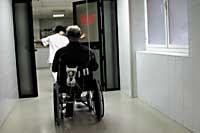
Medications and surgery have been used for the proper dispersion of fluids through the body and to prevent occlusions. Some medicines have the function of destroying obstacles, such as aspirin, and other dilation of the vessels. Surgery is used in extreme cases where the patient cannot walk, the pain is unbearable, or there is a risk of foot loss from gangrene.
Arteriosclerosis itself can cause other diseases. Often, when performing very light physical exercises, it causes pain in the calves and thighs. Pain occurs when the muscles used to walk do not receive oxygen, the arteries are tightened and the atheroma plaques become obstacles.
Excessive plaque buildup in the narrows can lead to the formation of coacids. If the clot area is increased and more coavids appear, thrombosis appears and thrombi are released, embolism. Once the coavids are released they can reach smaller arteries, close them completely and cause extreme ischemia. These ischemia can be severe, as tissues related to ischemia can be lost forever. The current surgical solutions are the placement of prostheses to replace the arteries or the internal dilation of them.
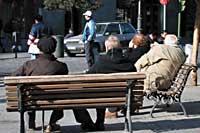
When they occur in the brain, thrombi and embolism, the consequences can be very serious: paralysis, loss of ability to speak, uncontrollable movements, death... as in traffic accidents. In these cases, brain cells sometimes become oxygen-free, lose the ability to work. In addition to the accumulation, blood spills occur in the arteries and veins of the brain (rupture of the pipe) causing lack of oxygenation in the spill area. Depending on the size of the attacks and consequences, treatments can be very varied, from medicines to adjust blood circulation to complicated interventions in the operating room.
Thrombophlebitis also has to do with bleeding, but accumulation does not occur in the arteries but in the veins. You feel pain and heat and the thrombus area becomes golden. Thrombophlebitis attacks the limbs, especially the legs. If you spent a lot of time in bed it is easy. For this reason, people with disabilities and those who have undergone surgery have more risks and those who make long trips. Administration of hormones or estrogens, such as contraceptives, is also considered a risk factor.
Visual problems
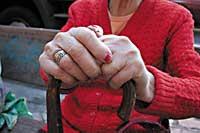
Unlike these outbreaks, other age-related diseases appear slowly. Visual highlights, such as glasses = age. And when the disease is solved with the simple placement of glasses or contact lenses, such as myopia, farsightedness, astigmatism or presbyopia, it is half bad, but for other problems they do not serve.
For cataracts, for example, glasses and contact lenses do not work. Behind the pupil is the lens, a clear lens used to focus things. Over the years, the lens loses transparency and can become completely opaque. Less transparency, greater cataract and less visibility. It is like going by car when there is sirimiri: the vision is decreasing, it looks blurred, as between mists, the vitality of the colors can not be noticed. Even with glasses, the view does not improve. These symptoms and the normal review that the ophthalmologist can perform are sufficient for the diagnosis of cataracts.
Cataracts are one of the most common diseases of age, but they can also cause diabetes, extreme myopia, or an accident. According to data, 75% of those over 75 years old have cataracts. The problem is overcome operatively. The part of the lens that has lost transparency is removed and an artificial lens is placed inside the eye. If everything goes well, it recovers the view.
…urine also costs!
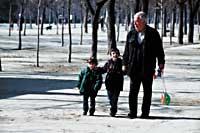
All previous diseases do not make significant distinction between sexes, but they are also in the elderly. The most common or known for their number are male prostate problems. Increased prostate size is the cause. As age progresses, the number of female hormones or male estrogens exceeds that of male hormone or testosterone. Hence the growth of the prostate. Obesity and hypertension can also have the same effect.
The growth of the prostate is not repeated, it is a very slow process and the symptoms that denounce the disease appear slowly. Difficulty urinating, frequency of urination, obligatory urination at night, and feeling that the balloon is not completely empty are common symptoms. Symptoms may be more severe, from when you can't urinate to getting blood out. It can be checked whether or not the prostate has grown through rectal analysis and studies.
Treatment with hormones or drugs can be adequate and can even be inevitably intervened.
Alzheimer's and Parkinson's diseases have not even been mentioned in the previous lines and should be on the list. This is an intentional marginalization, since in view of its expansion they deserve more than a few lines. But if there are more age-related diseases, the list is broad, almost inexhaustible. No wonder, the population, the park of old cars, is older.
Related information Retinal disease researcher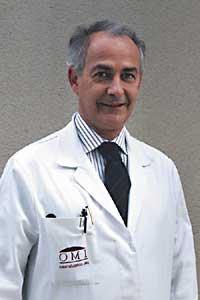 NUM Born in Bilbao, he has turned 30 in Barcelona. In this sense it is considered Catalan, although it is often found in Bilbao. He studied in Barcelona, both general medicine and specialization in retinal diseases. He also traveled to the United States to learn more. He returned from there and, together with other friends, opened in Barcelona a prestigious clinic specializing in retina. Her research work is intense and she is in contact with other research groups worldwide. Are there many age-related eye diseases?Yes, and I would say that the most important, the most harmful, is the degeneration of the macula. People have more life expectancy and the muscles are forming as age progresses. People can have a lot of quality of life, but with little visual quality. What should be done against this disease?In principle the treatment is not simple, but in the last ten years we have advanced a lot. The degeneration of the macula can be of two types: dry and wet. In dry degeneration, the retina loses progressive and continuous capacity. The loss is usually slow and sometimes undestructive. Wet degeneration is much more destructive. The liquid penetrates the lower tubes of the retina, which grow, causing macula destruction in a very short time. Do you treat them?In recent years we have realized that with doses of antioxidants and certain vitamins we managed to reduce the incidence of the disease. We have not managed to slow down, but we did move much more slowly. And in wet variants of a disease there is something to do?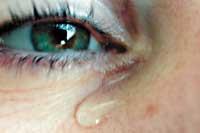 MEC The disease is due to increased blood vessels. At present, removal treatments of these tubes are carried out so that in case the growth of more tubes is prevented the sight can be kept. The first treatments were performed with photodynamic therapy. This type of therapy is developed by other research centers and ours. Many times we have managed to stop the disease and not lose sight. Before doing so later, what is photodynamic therapy?In short, it would be the destruction of the tubes that grow in the macula by the selective use of certain substances and the laser. When did they start?About four years ago. Of course, since then we have continued to investigate if in order not to grow these tubes we find another drug, drug or form. And we found it. We have injected certain corticoids into the eye and have managed to keep these tubes from growing. But you still do not do this kind of treatment.The trials have already been conducted, the results have been collected and presented and we expect them to be approved at the beginning of the year. They have already been approved in the United States and in Europe will be shortly. The next step will be the combination of both treatments, on the one hand the destruction of these tubes raised by photodynamic therapy and on the other prevent further growth of the tubes by injections of corticoids. Of course you will continue to investigate, but on what path?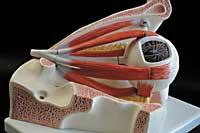 MEC We will continue to look for more specific drugs. In fact, these tubes that grow in excess have their characteristics and we will continue to look for drugs that adapt to those characteristics. Ten years ago we had no treatment for the maculopathies, four photodynamic therapies ago, now the drugs… within ten years we would have something better. Do you research in Barcelona?Not only here. We are international teams that investigate one or two fields. In this research we are working between 4 and 5 European groups, plus many others from the United States. We have united maculopathy and age. Is it true? Who can develop the disease?In fact, the disease is not old, but affects over 50 years. If it had to be generalized, I would say that as age progresses the chances of suffering some macula disease are greater.
|




